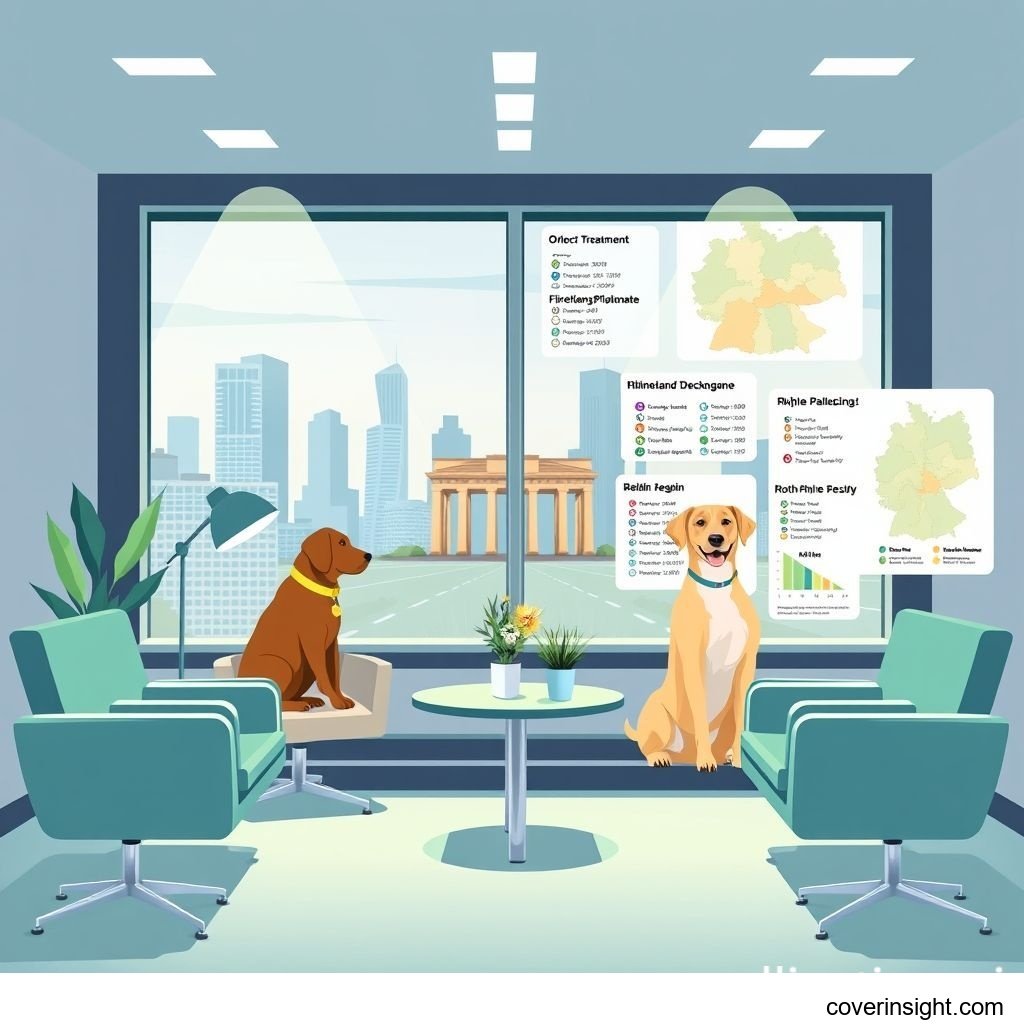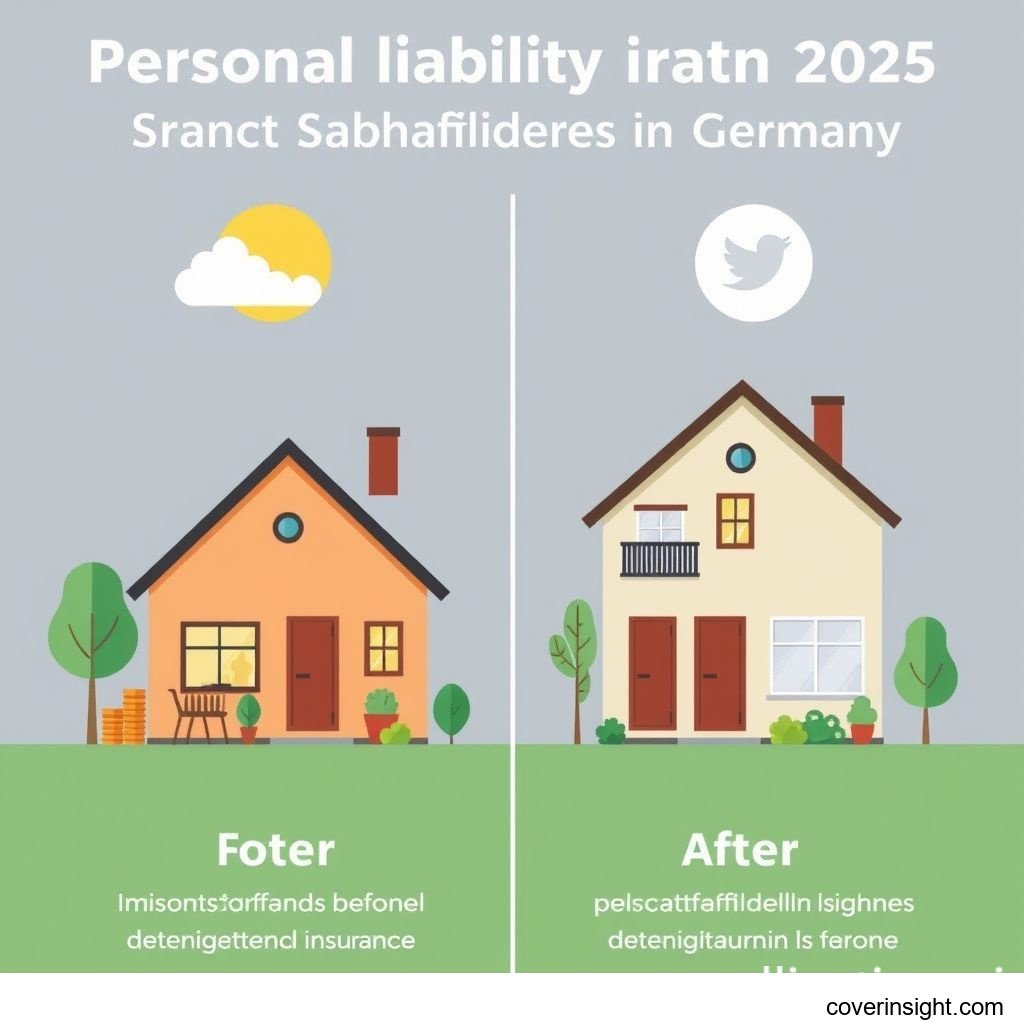Introduction
As we look towards 2025, pet ownership in Berlin, a city renowned for its green spaces and pet-friendly atmosphere, continues to flourish. With countless furry companions enriching the lives of their owners, the topic of pet health and financial security becomes increasingly pertinent. Just like human healthcare, veterinary costs can be substantial and unpredictable, making a robust Tierkrankenversicherung (pet health insurance) not just a luxury but a crucial consideration for responsible pet parents. Navigating the options, particularly the choice between accident-only and full-protection coverage, is key to ensuring your beloved pet receives the best possible care without putting a significant dent in your wallet.
Coverage Details
Choosing the right pet insurance in Germany requires a clear understanding of what different policies offer. Generally, you'll encounter two main types: accident-only (Unfallschutz) and full-protection (Vollschutz).
What’s Included
Accident-Only (Unfallschutz): This type of policy is designed to cover veterinary costs arising directly from an accident. This typically includes:
-
Emergency treatment for injuries like fractures, severe cuts, or internal damage due to falls, collisions, or other sudden external events.
-
Necessary diagnostic procedures (X-rays, MRI) related to the accident.
-
Surgical interventions and post-operative care required because of an accident.
-
Medication administered during the accident-related treatment.
While more affordable, it’s crucial to understand its limitations: it won't cover illnesses, chronic conditions, or routine check-ups.
Full-Protection (Vollschutz): This comprehensive option offers a far broader range of coverage, encompassing not just accidents but also illnesses and often preventive care. A full-protection policy typically includes:
-
Illness Treatment: Costs for diagnosing and treating diseases, from common infections to more complex conditions like diabetes or cancer. This includes vet consultations, medication, lab tests, and hospital stays.
-
Accident Coverage: All the benefits of an accident-only policy are usually included here.
-
Surgery: Coverage for both accident-related and illness-related surgeries.
-
Routine & Preventive Care: Many comprehensive plans offer allowances for annual check-ups, vaccinations, deworming, flea and tick prevention, and dental cleanings.
-
Diagnostics: Extensive coverage for all necessary diagnostic tools.
-
Alternative Therapies: Some policies cover treatments like physiotherapy, acupuncture, or osteopathy, especially if prescribed by a veterinarian.
For those looking for broader financial security for their pet's health, exploring comprehensive options can offer peace of mind. For more insights, consider checking various “Insurance Resources Global” to compare offerings.
Common Exclusions
Even the most comprehensive policies have their limits. Understanding common exclusions is vital to avoid unexpected bills. These often include:
-
Pre-existing Conditions: Illnesses or injuries that your pet had before the policy started or during a waiting period. This is often a deal-breaker for older pets or those with known health issues.
-
Hereditary or Congenital Conditions: Some policies might exclude conditions that are specific to certain breeds or are present from birth, although many modern policies are becoming more inclusive.
-
Cosmetic Procedures: Surgeries or treatments purely for aesthetic reasons (e.g., ear cropping, tail docking if not medically necessary).
-
Behavioral Issues: Treatment for behavioral problems that are not directly linked to a medical condition.
-
Breeding-Related Costs: Expenses associated with pregnancy, birth, or infertility treatments.
-
Specific Treatments: Some experimental treatments, or very high-cost specialized therapies, might be excluded or have limited coverage.
-
Age Limits: Many policies have an upper age limit for new enrollments, though once insured, pets are usually covered for life.
Always read the fine print (das Kleingedruckte) and ask specific questions about your pet's breed and age.
Cost Analysis
The cost of pet insurance in Germany can vary significantly. Understanding the factors that influence premiums and knowing how to save money can help you make an informed decision.
Price Factors
Several elements play a role in determining your annual or monthly premium:
-
Type of Coverage: Accident-only policies are considerably cheaper than full-protection plans due to their limited scope.
-
Pet's Breed: Certain breeds are predisposed to specific health issues (e.g., hip dysplasia in large dogs, respiratory problems in brachycephalic breeds), leading to higher premiums.
-
Pet's Age: Younger pets generally have lower premiums as they are less likely to have pre-existing conditions or age-related illnesses. Premiums typically increase with age.
-
Pet's Health Status: A pet with a clean bill of health will usually qualify for better rates than one with a history of medical issues.
-
Deductible (Selbstbeteiligung): This is the amount you pay out-of-pocket before your insurance kicks in. A higher deductible typically results in lower monthly premiums, but means more personal expense per claim.
-
Coverage Limits: Policies have annual or per-incident limits on how much they will pay out. Higher limits mean higher premiums.
-
Location: While not as significant as other factors, metropolitan areas like Berlin, with potentially higher veterinary costs, might see slightly different premium structures compared to rural regions. According to the GDV (German Insurance Association), the average cost of veterinary treatment in Germany has been steadily rising, reflecting advancements in animal medicine and increased pet ownership, which inevitably impacts insurance premiums.
Saving Tips
While you want comprehensive coverage, there are smart ways to potentially reduce your premiums without compromising essential care:
-
Choose a Higher Deductible: If you're comfortable paying a bit more out-of-pocket for smaller issues, a higher deductible can significantly lower your monthly premium.
-
Opt for Annual Payment: Many insurers offer a discount if you pay your premium annually rather than monthly or quarterly.
-
Bundle Policies: If you have multiple pets or other insurance policies with the same provider (e.g., liability insurance), inquire about multi-pet or bundle discounts.
-
Maintain Your Pet's Health: Regular preventive care, a healthy diet, and sufficient exercise can keep your pet healthy, potentially reducing the need for claims and showcasing responsible ownership to insurers, though this doesn't directly lower premiums, it ensures you get the most out of your policy.
-
Compare Offers: Don't just settle for the first quote. Use online comparison portals or directly contact various providers. For robust comparison, it's worth checking the official guidance from BaFin - Federal Financial Supervisory Authority, which oversees insurance providers in Germany.
FAQs
How much does Berlin pet insurance cost?
In Berlin, pet insurance premiums can vary widely depending on the factors mentioned above. For an accident-only policy for a young, healthy dog, you might pay anywhere from €10-€25 per month. For comprehensive full-protection coverage, especially for larger breeds or older pets, premiums could range from €30-€80+ per month. For a cat, costs are generally lower, often €15-€50+ for full coverage. It's always best to get personalized quotes for your specific pet.
What affects pet insurance premiums?
Premiums are primarily affected by the type of coverage (accident vs. full), your pet's breed, age, and health history, the chosen deductible, and the annual coverage limit. Generally, the more risk an insurer takes on (e.g., covering an older pet with a history of illness and a low deductible), the higher the premium will be.
Is pet insurance mandatory in Germany?
No, pet health insurance is not mandatory in Germany. However, pet liability insurance (Tierhalterhaftpflichtversicherung) for dogs is mandatory in some federal states (e.g., Berlin, Hamburg, Lower Saxony). While health insurance isn't legally required, it's highly recommended, especially given the rising costs of veterinary care. "Auf Nummer sicher gehen" (playing it safe) financially for your pet's health can save a lot of headaches.
How to choose the right pet insurance?
Choosing the right policy involves assessing your pet's needs and your financial comfort level. Consider your pet's breed-specific risks, their age, and your budget. Compare policies not just on price, but also on what's included (and excluded), the deductible, the annual limits, and the insurer's reputation. Don't shy away from asking detailed questions. A good starting point for understanding your options in the German market is to visit the “DE Insurance Home” for general guidance.
What are the consequences of no pet coverage?
Without pet insurance, you are solely responsible for all veterinary bills. This can lead to significant out-of-pocket expenses for unexpected accidents or illnesses. For instance, a complex surgery for a fractured leg can easily run into several thousand Euros. A case study from Berlin highlighted this when a dog owner, whose Retriever suffered from a sudden intestinal blockage requiring emergency surgery, faced a bill of nearly €3,500. Without insurance, this can force pet owners into difficult decisions about their pet's treatment, or even lead to financial hardship. "Kleinvieh macht auch Mist" – even small, recurring vet visits can add up quickly, let alone a major emergency.
Author Insight & Experience:
Based on my experience living in Berlin and witnessing the deep bond between residents and their pets, I've seen firsthand how quickly unexpected vet bills can accumulate. It's not just about the money; it's about being able to say 'yes' to the best possible treatment for your beloved companion without financial hesitation. As someone who's navigated the German insurance landscape, I firmly believe that investing in good pet health insurance is one of the most responsible decisions a pet owner can make. It transforms a potential financial crisis into a manageable expense, allowing you to focus on your pet's recovery rather than the looming bill.








Comments